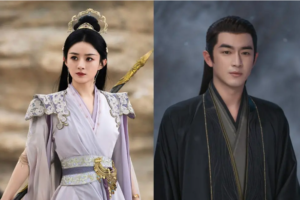Once Upon a Time in America, Sergio Leone’s masterpiece, is often hailed as one of the greatest films in cinema history. The film, which spans multiple decades, offers a deep, introspective look at the lives of its characters, weaving together themes of friendship, betrayal, and the consequences of a violent past. From its intricate narrative structure to its unforgettable performances, Once Upon a Time in America holds a special place in film history. In this article, I’ll uncover five shocking revelations and unforgettable moments from this cinematic treasure that will leave you reflecting on its deeper meanings.
1. The Nonlinear Storytelling and Time Jumps
One of the most shocking revelations of Once Upon a Time in America is its unconventional use of nonlinear storytelling. Instead of following a traditional, linear narrative, the film unfolds through a series of flashbacks spanning three distinct time periods: the 1920s, the 1930s, and the 1960s.
The Effect of Nonlinear Storytelling:
- 1920s: The characters’ youth and ambitions set the stage for their future in crime.
- 1930s: The rise of the gang’s influence, showing how their past decisions shape their criminal empire.
- 1960s: A nostalgic and haunting reflection on the consequences of choices made in youth.
This narrative structure forces the audience to actively piece together the story, creating a sense of mystery and suspense. As viewers, we learn more about the characters by flashing back to their younger selves, and their futures are revealed in fragments that don’t always make immediate sense. The ultimate twist, revealed towards the end of the movie, causes the audience to rethink the entire narrative.
The Shocking Moment:
One particularly shocking moment is when we realize that some of the events we’ve seen in the 1960s timeline may not have actually happened, turning our understanding of the plot upside down. This twist is one of the most memorable and challenging aspects of the film.
2. The Emotional Weight of Friendship and Betrayal
Another unforgettable part of Once Upon a Time in America is its exploration of friendship and betrayal. The film follows Noodles (Robert De Niro) and his lifelong friends, including Max (James Woods), through the ups and downs of their lives in crime. While the movie initially portrays a strong sense of loyalty between the characters, things slowly begin to unravel.
Key Themes of Friendship and Betrayal:
- The Bond Between Noodles and Max: These two characters share a deep bond, forged in their youth, but over time, Max’s actions lead to an irreversible betrayal. This betrayal is one of the most heartbreaking revelations in the movie.
- The Fragility of Loyalty: As the narrative unfolds, it becomes clear that trust, even between lifelong friends, can be easily broken in a world driven by crime, greed, and power.
This sense of betrayal becomes particularly shocking in the context of the film’s sprawling time jumps, as we start to understand the emotional toll it takes on Noodles. His pain is not just due to betrayal but also to the realization that he might never fully understand the motivations behind the actions of those he trusted the most.
3. The Cinematic Genius of Sergio Leone
Sergio Leone, one of the most celebrated directors in cinema, brings his signature style to Once Upon a Time in America. Known for his epic westerns, Leone’s approach to this gangster epic is nothing short of cinematic genius. The film’s striking visual compositions and pacing are a testament to his mastery of storytelling.
Leone’s Cinematic Techniques:
- Use of Wide Shots: Leone is famous for his use of wide shots that emphasize the scale of the environment. In Once Upon a Time in America, these wide shots often contrast the characters’ smallness against the vast, sprawling cityscape, symbolizing the weight of their decisions in the context of a much larger world.
- Close-Ups and Tension: Leone is equally skilled at using extreme close-ups to highlight the internal struggles of his characters. The long, intense pauses in dialogue create a tension that lingers long after the scene has passed.
The visual style in Once Upon a Time in America is as much a character as any of the actors. It’s a crucial part of how the film immerses us in its world of crime, loyalty, and loss. Leone’s ability to make every moment feel monumental, whether through wide shots of New York City or intimate close-ups, contributes to the film’s status as a timeless classic.
4. Ennio Morricone’s Haunting Score
The soundtrack of Once Upon a Time in America, composed by Ennio Morricone, is another key element that elevates the film. Morricone’s haunting score is deeply intertwined with the emotional core of the film, with its themes of nostalgia, regret, and the passage of time. The music is not just an accompaniment to the story—it enhances the emotional weight of every scene.
Key Musical Moments:
- “Deborah’s Theme”: This iconic melody, representing Noodles’ love for Deborah (Elizabeth McGovern), is heard throughout the film. The music evokes a sense of longing and tragic nostalgia, underscoring the film’s central theme of lost opportunities and the passage of time.
- Music and Silence: Morricone also uses silence effectively, building tension in scenes where words are unnecessary. The score’s ability to communicate what is left unsaid makes it one of the most powerful components of the film.
The emotional depth conveyed by Morricone’s music, combined with Leone’s direction, makes Once Upon a Time in America an unforgettable cinematic experience. The music is as integral to the storytelling as the actors’ performances, and it leaves a lasting impact on the audience.
5. The Tragic and Ambiguous Ending
The final shocking revelation of Once Upon a Time in America comes with its ambiguous ending. After nearly three hours of complex, intertwined narratives, the film concludes with a series of events that leave much open to interpretation.
Key Elements of the Ending:
- The Twist: The twist reveals that much of what we thought we knew about the characters and their motivations may not be as it seemed. This revelation changes the entire lens through which we view the story.
- Noodles’ Reflection: As Noodles contemplates his past, the film’s closing moments underscore the irrevocability of time. The choices made in youth cannot be undone, and the weight of those choices has a profound impact on the characters’ futures.
The ambiguity of the ending leaves room for interpretation, making it one of the most debated aspects of the film. Is Noodles simply haunted by the past, or did he create the events he experienced? The open-ended nature of the conclusion is what makes it both tragic and unforgettable.
Once Upon a Time in America Movie Analysis
Once Upon a Time in America is a complex and nuanced film, filled with deep symbolism and profound storytelling. A movie analysis of this cinematic masterpiece uncovers themes of crime, friendship, betrayal, and the passing of time. By exploring its narrative structure, the film’s non-linear storytelling approach becomes evident, highlighting Leone’s brilliant filmmaking. Understanding the Once Upon a Time in America movie analysis also helps in decoding the emotional and visual impact the film delivers. Critics have long admired the intricate details of the movie’s plot and its deep connections to historical contexts.
How Long is Once Upon a Time in America
When wondering how long is Once Upon a Time in America?, it’s important to know that this epic film has a lengthy runtime that contributes to its rich storytelling. The movie clocks in at about 229 minutes in its theatrical release, with extended versions running even longer. The extended cuts delve further into the film’s characters, enhancing the narrative’s depth. The film’s duration allows it to explore the complexities of its characters and historical events. For viewers who seek to understand the film’s pacing and why its extended scenes matter, this link provides additional details on the film’s running time and its significance in the world of cinema.
Once Upon a Time in America Cast and Characters
The Once Upon a Time in America cast and characters feature some of the most memorable performances in film history. Starring Robert De Niro, James Woods, and Elizabeth McGovern, the film showcases a vast array of characters, each contributing to the complex plot. The portrayal of Noodles, played by De Niro, is especially lauded for its depth, as his character evolves throughout the film’s timeline. Understanding the Once Upon a Time in America cast and characters can provide greater insight into how Leone created such a compelling narrative.
FAQs
1. What is the significance of the nonlinear storytelling in Once Upon a Time in America?
The nonlinear structure allows the audience to slowly piece together the character’s histories and motivations. It adds layers to the story, encouraging viewers to reflect on the consequences of the characters’ decisions across time.
2. How does Once Upon a Time in America compare to other gangster films?
Unlike traditional gangster films that focus on action and crime, Once Upon a Time in America delves deep into the psychological and emotional impacts of a life of crime, making it a more reflective and complex narrative.
3. Why is the ending of Once Upon a Time in America so significant?
The ending of the film is significant because it forces the audience to question what they thought they knew about the story. It challenges our understanding of memory, time, and the consequences of our actions.
4. What makes Sergio Leone’s direction in Once Upon a Time in America so unique?
Leone’s direction is unique because of his ability to create tension with minimal dialogue, using visual storytelling and silence to evoke emotions. His attention to detail and mastery of pacing help elevate the film to a cinematic masterpiece.
Conclusion
Once Upon a Time in America is not just a film—it’s an experience. Through its nonlinear storytelling, complex characters, and stunning visuals, it reveals a world where choices have profound consequences. The film’s shocking revelations and unforgettable moments are what make it stand the test of time, and it continues to be a work of art that challenges the conventions of the gangster genre.
If you’re looking to dive deeper into classic films with complex narratives, I highly recommend checking out more cinematic works like How I Met Your Father, which offers a unique perspective on storytelling with its own set of surprising twists.
By reflecting on the choices of its characters and the inevitable passage of time, Once Upon a Time in America reminds us that while we cannot change the past, we can learn from it. Whether it’s your first time watching or your tenth, this film is bound to offer something new each time you revisit it.
You May Also Like:
Feliz Día de las Madres: 10 Heartwarming and Unforgettable Celebrations











